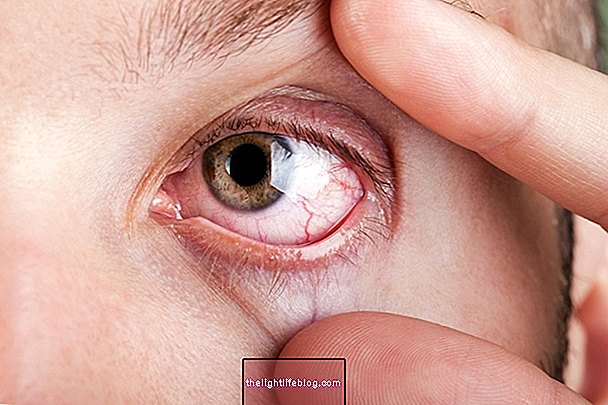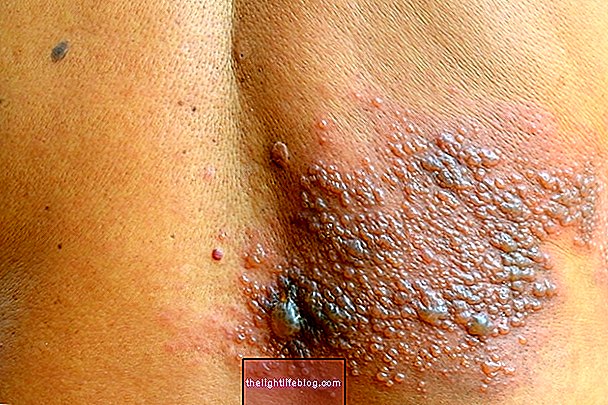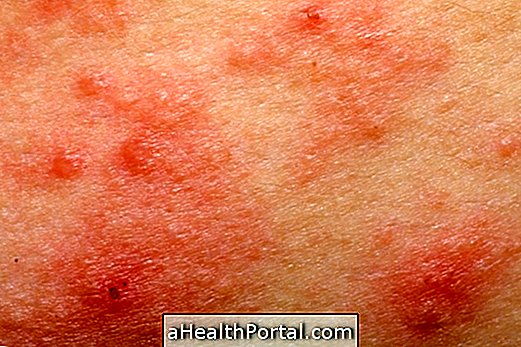Herpetiform dermatitis, also known as Duhring's disease or celiac herpetiform dermatitis, is an autoimmune disease that causes the formation of small itchy skin blisters, similar to lesions caused by herpes.
Although this disease can appear in anyone, it is more common in people who suffer from celiac disease, as it appears to be related to gluten sensitivity.
Herpetiform dermatitis has no cure, but treatment with a gluten-free diet and antibiotic use, in the most severe cases, helps to relieve symptoms, allowing for a better quality of life.

Main symptoms
The characteristic symptoms of herpetiform dermatitis include:
- Red flaking plates;
- Little bubbles that itch a lot;
- Bubbles that pop easily when scratching;
- Burning sensation in the affected regions.
In addition, it is also very frequent the appearance of wounds around the blisters, which arise from scratching the skin with too much intensity.
The most affected regions are usually the scalp, the butt, the elbows, the knees and the back, and usually appear symmetrically, that is, it appears on both elbows or both knees, for example.
What causes herpetiform dermatitis
The possible cause of dermatitis herpetiformis is gluten intolerance, as this substance activates the immune system, giving rise to the formation of immunoglobulin A, a substance that causes the body to attack the cells of the intestine and skin.
Although it appears to be caused by gluten, there are many cases of people with herpetiform dermatitis who do not have any intestinal symptoms of gluten intolerance and, therefore, the cause has not yet been fully defined.
How the treatment is done
The most used form of treatment to combat herpetiform dermatitis is to eat a gluten-free diet, therefore wheat, barley and oats should be eliminated from the diet. Check out more guidance on how to remove gluten from your diet.
However, as the diet takes some time to take effect, the dermatologist may also recommend the use of an antibiotic in tablets, known as Dapsone, which relieves symptoms in 1 to 2 days. Because it can cause various side effects, such as diarrhea, nausea and even anemia, Dapsone, the dose of Dapsone must be decreased over time until the minimum dose capable of relieving symptoms is found.
In case of allergy to Dapsone, the dermatologist may prescribe the use of ointments with corticosteroids or the use of other antibiotics, such as Sulfapyridine or Rituximab, for example.
How to confirm the diagnosis
The diagnosis is usually made with a biopsy of the affected skin, in which the doctor removes a small piece of skin that will be evaluated in the laboratory to evaluate if there is the presence of immunoglobulin A at the site.
Was this information helpful?
Yes No
Your opinion is important! Write here how we can improve our text:
Any questions? Click here to be answered.
Email in which you want to receive a reply:
Check the confirmation email we sent you.
Your name:
Reason for visit:
--- Choose your reason --- DiseaseLive betterHelp another personGain knowledge
Are you a health professional?
NoMedicalPharmaceuticalsNurseNutritionistBiomedicalPhysiotherapistBeauticianOther












-o-que--sintomas-e-tratamento.jpg)










